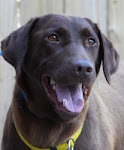If your furniture, floor and carpets have more [pet] hair on them then your Uncle Fred’s head, you know Spring is here!
The fact is, shedding fur is a natural process for dogs (and cats). Some shed year-round, while others may only shed in the spring to reduce their winter coat. Dogs will also shed broken or damaged hair if their skin is irritated from by allergies. Yes, like people dogs can have seasonal allergies too.
Although the cycle of losing fur is just part of being a dog, there are ways to help control the amount of shedding, while keeping the home cleaner and the dog more comfortable. A schedule of regular grooming, vet visits and a healthy diet can help reduce the amount of shedding from your pet.
Daily Grooming
Plan a regular grooming schedule for the dog. Brush him daily to control the release of fur. Go outside, and smooth the brush over his back, tummy and legs. Allow the loose hairs to fall outside and collect in a dog brush. This will reduce the amount of loose fur on the dog's body, keep the interior of the home cleaner and provide daily attention for the dog.
Bi-Weekly Baths: Tips for Washing Your Dog
The sooner you get the dead coat out, the sooner a new coat will come in. “Self-serve” dog washes are an excellent option to using your bathtub or paying an expensive grooming fee.
Wet your dog with the warmest water your dog can stand. You want it very warm, but not hot enough to burn the dog's skin. Use your fingers to work through the coat and loosen it up. You don’t need shampoo. Work your fingers through the coat as you lift and wash away the fur from the dog.
Use a blow dryer to dry the coat. The dryer will help to blow away any remaining loose hair.
Never Shave a Lab
The ONLY reason to shave anything on a Lab is:
1. For Surgery
2. For a Hot Spot
Only your vet should shave the area that needs to be shaved. If you see a hot spot, then let your vet treat it to keep it from spreading. Shaving a Lab for routine maintenance is WRONG and is NOT healthy for the dog.
The Facts and Fiction About Shaving A Lab:
Fiction: Shaving a Lab will reduce shedding.
Fact: The dog will only shed shorter hairs.
Fiction: All that hair must make the dog hot.
Fact: The undercoat actually keeps the dog cooler.
Fiction: Dogs can’t get sun burned.
Fact: A shaved dog has and increase risk of being exposed to damaging UV rays that they would not otherwise be exposed to
More suggestions...
1. Feed your dog appropriate pet food. A pet’s coat is often a reflection of what they eat. Feed a high quality/premium food with good digestible protein sources.
2. Cover your furniture and car seats. Upholstery is a magnet for pet hair, and removing pet hair from furniture or car seats can be tedious. If you allow pets on your furniture or bed, you would be wise to invest in a few furniture throws. Throws will keep your furniture looking (and smelling) better and make your home more inviting to guests. Car seat covers are also an excellent investment and are highly recommended.
3. Control allergies and fleas. If your pet is scratching because of allergies, supplement with Vitacaps® and Biotin to control inhalant allergies that irritate the skin. Be sure to see your veterinarian to make sure your pet is getting proper allergy relief. To prevent itching and scratching from fleas, use a flea repellent that your vet recommends to prevent and control infestations.
4. Have regular checkups. Many diseases can affect the skin and haircoat. Regular visits to your veterinarian will help identify problems early and provide more effective treatment.
5. To control shedding, use the right brush. Not all are created equal.
6. Remove hair from upholstery and your dog’s bed as soon as possible. Newly shed hair is easier to remove before it works its way into upholstery fabric. A tape roller is one of the best tools for removing hair.




